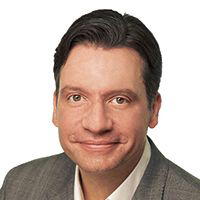

- Anthony Carfang
- Managing Director, The Carfang Group

- Justin Brimfield
- Chief Marketing Officer, Institutional Cash Distributors (ICD)
In the wake of Covid-19, corporates are reassessing their liquidity management strategies. To assist treasury managers in this endeavour, ICD and The Carfang Group have created a new quantitative model for assessing the risk/return relationships among money market instruments. Justin Brimfield, Chief Marketing Officer, ICD, and Anthony J. Carfang, Managing Director, The Carfang Group, explain how the model works and outline how it can be used to health check short-term investment portfolios and sense check investment policies.
March 2020 was the most profound stress test that money markets have seen since the post crisis regulations. As Covid-19 spread across the globe, and economic turmoil took hold, corporates shifted assets, drew down on credit lines and issued debt as a means to increase the liquidity and safety of their cash.
Carfang says: “There was an immediate emotional response to the coronavirus crisis. Investors were uncertain, so the majority sought a safe harbour. As a result, we saw trillion-dollar inflows into money market funds (MMFs).” Even since the ‘March madness’, assets in money market instruments have remained at historic levels.
Brimfield adds: “We expected to see some of the cash corporates are sitting on being reinvested into the business – to help make organisations more resilient post-pandemic and to bolster growth. Nevertheless, most of the over 400 corporates on ICD Portal have held on to their large cash balances. We are still very near record highs in assets on ICD Portal, well over $200bn.”
Moreover, investors want to make more informed decisions going forward, Brimfield believes. “In March, we saw emotion overtake disciplined investment philosophies. Now that the initial turmoil is behind us, it’s time for corporate treasurers to review what they’ve learnt and re-examine their liquidity management practices, based on concrete data. To help this process, ICD has teamed up with The Carfang Group to develop a methodology to evaluate the risk, return and liquidity trade-offs in the money markets, with the aim of identifying opportunities for building a more optimised short-term investment portfolio.”
Model behaviour
This collaboration has led to the creation of a new quantitative model, called Beta(m)™, based on Modern Portfolio Theory (MPT), but adapted to the money markets. Carfang explains: “MPT evaluates the overall securities market, most often using the S&P 500 as a proxy, and computes a beta for each portfolio to measure relative risks. This is much more difficult in the money markets, since different securities have different characteristics. Some are discounted, others pay interest or dividends, some fluctuate in value, and others trade at par or mature at par.”
In order to be consistent across all these instruments, a ‘variance of total return’ methodology was used to construct Beta(m)™. And after testing 14 money market instruments (the most commonly used by corporate investors) over a five-year period, the one-month T-bill emerged as the most robust representative of overall short-term money market volatility. As such, the model measures the volatility of 13 other money market instruments against the one-month T-bill, which has a Beta(m)™ of 1.00.

Assessing risks and returns
With this baseline established, the next step was to explore the ‘efficient frontier’ for money markets – as a means to define the risk-return trade-off. Says Carfang: “MPT holds that there is a definable trade-off between risk and return. Lower risks result in a sacrifice of returns, whereas higher returns require more risk on the part of the investor. It further holds that at each level of risk, there exists one portfolio, or instrument, that is superior to all others.”
In a slight departure from how MPT identifies optimal portfolios, Beta(m)™ uses the efficient frontier in the money markets as a long-term indicator of the relative risks and returns of classes of instruments. To find this money market efficient frontier, The Carfang Group and ICD again statistically analysed the five-year returns of the 14 chosen instrument types in the money market universe. “The correlation was remarkable,” says Carfang. “The low beta instruments indeed had the lowest returns and vice versa – and this demonstrates the efficiency of the money markets as a whole.”
He continues: “Those instruments above the efficient frontier line on a short-term basis are where corporates want to be parking their cash, to achieve the best trade-off between liquidity, return, and risk. The reverse goes for those below the line. The model can be used to identify these short-term opportunities.”
UNDER THE HOOD OF BETA(M)™
An in-depth explanation of how Beta(m)™ was constructed falls beyond the scope of this article. Find out more about the methodologies used and the efficiency of individual money market instruments by downloading the accompanying white paper at https://bit.ly/30QHQrg.
Practical usage
Carfang elaborates: “We can quantitatively demonstrate that for any instrument below the ‘efficient frontier’ line, a combination of instruments above the line can be used to create the same characteristics – and give a higher return. So, corporates can look at the investment options above the efficient frontier line that offer superior return at the same risk level and optimise their portfolio, assuming no constraints from their investment policy.”Of course, the definition of an efficient portfolio will vary from corporate to corporate – but this is where the beauty of the Beta(m)™ model comes into its own. Brimfield comments: “The model enables treasurers to easily evaluate the risk-weighted returns of money market instruments in a common way. It can be used to identify the best portfolio that will provide an acceptable level of risk, a liquidity profile that is in line with their investment policy, and the security they are looking for.”
He shares an example: “Take a corporate that has a conservative investment policy that only allows the treasurer to invest in securities that are directly or derivatively guaranteed by the government, with 100% same-day liquidity. Using the efficient frontier, we can see that Treasury MMFs and Government MMFs are the only instruments above the line – so for this conservative investor, a mix of those two would be the optimal portfolio. But, if we then test those investment constraints by shifting the parameters to be 50% next-day liquidity and 50% same-day, then the Federal Insured Deposit Account becomes more attractive. Similarly, if the government guarantee constraint were lifted, Prime MMFs would form part of the optimal portfolio – while still retaining the liquidity requirements, yet delivering improved returns.”
As such, the Beta(m)™ model empowers CFOs and treasurers to challenge investment policy restrictions and to present the board with concrete data around improved returns. Brimfield notes: “For the first time, finance leaders can conduct a cost/benefit analysis of every element in the investment policy – thanks to Beta(m)™. The board has never seen that before.”
A healthy portfolio
The Beta(m)™ model is not designed to be used on a daily basis, of course. This new tool is designed more for a periodic review, a health check of the current portfolio to see how it is performing relative to how the market is operating – and to help identify how the treasurer can get the best market return while minimising risk.
“We truly believe that Beta(m)™ will change the way that treasurers look at their short-term investments. For the past 18 years, ICD has been creating solutions to help make short-term investing more efficient for treasurers, by bridging information gaps. And since we are an independent portal, the focus is entirely on helping clients determine the best portfolio composition to fit their needs,” says Brimfield.
“After the financial crisis of 2008, we created Transparency Plus to help deliver insight into credit exposures. Now, after Covid-19, Beta(m)™ is the next evolution of our mission to help clients understand where the market is, and to identify where they could optimise their portfolio. We’re excited to see treasurers use this quantitative model to health check their short-term investment portfolios and potentially encourage tweaks to investment portfolios – on the back of solid data analysis. Knowledge is indeed power.”





